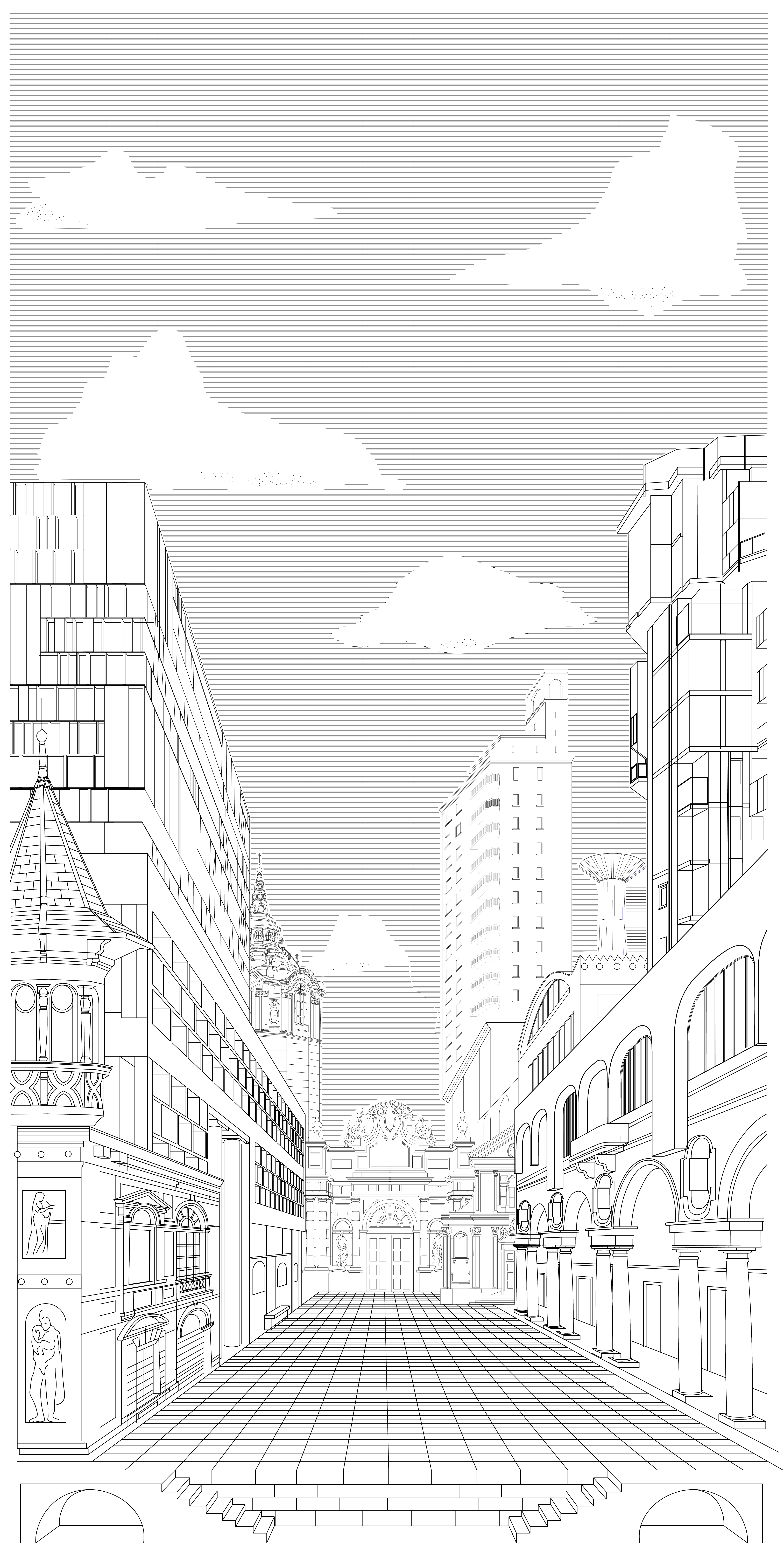It’s like it has always
been there

© ROBOCOOP
“COLLEGNO SI-CURA” Open Call for Street
Art / Torino, IT
September, 2018 / Collegno
It’s like it has always been there
Unrealized paper muralesProposed for an Open Call for Street Art, “It’s like it had always been there” is a work conceived as the visual restitution of an imaginary and ideal city, as well as a tribute to the architectural stratifications of Collegno and Torino.
Animated by a strong desire to exalt the architectures and the succession of the urban profiles of the Piedmont area, the image presents itself on the wall as a black and white illustration of a past and present city.
In 1978, Aldo Rossi, together with Arduino Cantafora and Gianni Braghieri, proposes the similar city, a huge hand-drawn painting depicting architectural works created by the studio but also buildings of the past to their loved ones.
Recovering the idea of Rossi to return an authentic and not only complete image of the city, Summa of references, reference and synthesis of an urban imaginary, “It’s like it has always been there” is a work conceived as the visual restitution of an imaginary city and Ideal, as well as a tribute to the architectural stratifications of Collegno and Torino.
Animated by a strong desire to exalt the architectures and the succession of the urban profiles of the Piedmont area, the image presents itself on the wall as an illustration of the past, in black and white: a central perspective-mental, visual and spatial continuation of Corso Francia, an axis that unites Torino and Collegno, making the morphological and territorial demarcation line between the two realities even more labile.
Realized with the technique of stencil poster, which envisages the use of the poster as an array of the final design, the illustration shows in this imaginary of the architectures known, Anonymous, abandoned, uninhabited, rediscovered, lived, hated and loved.

 © ROBOCOOP
© ROBOCOOP
Although it is a pastiche of buildings, the design follows a compositional logic: the attacks on the ground are made up of elements of more historical architectures in continuity with the central axis, such as the arcades ‘ Alla Serliana ‘ in via Roma and the ‘ off-scale ‘ pillars of the house Aurora alternating with the windows of the Palazzo del Valentino.
The upper level narrates examples of Piedmontese experimentalism:
from the village of Leumann of Fenoglio to the Brutalistic building of Alberto Gilardi, ending with the Dora Palace of the Brazilian Niemeyer. There are also residential and multi-use buildings, such as Lavazza by Cino Zucchi and the Torri Pitagora by Sodano & Luzi.
In the distance, there are longilinear bodies, as if they were the landmark of a family landscape: The Dome of Santo Spirito by Guarino Guarini, the Littoria tower by Armando Melise de Villa, a pillar of the Palazzo del Lavoro by Pierluigi Nervi. At the center, the Certosa di Collegno by Juvarra, at
the end of the prospect, where all vanishing points meet each other. That’s where you have to go: a symbolic architecture for associations.
On that wall, there is a city out of time, because “It’s like it
had always been there”.
